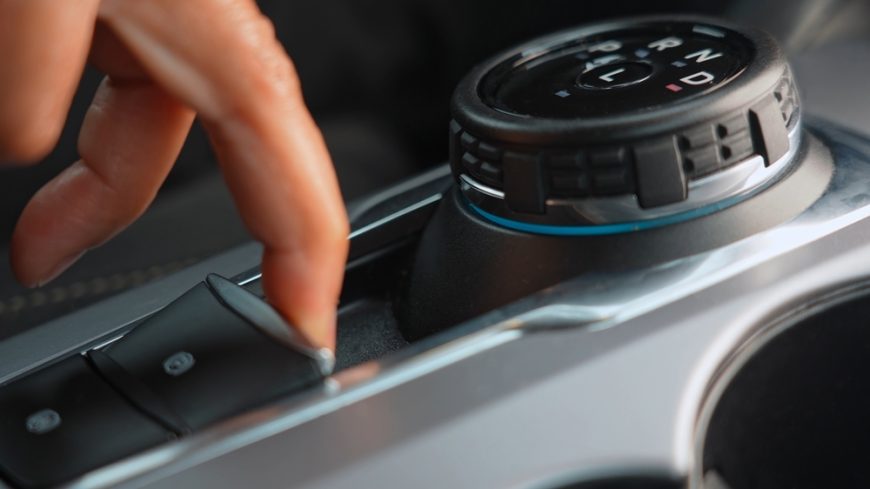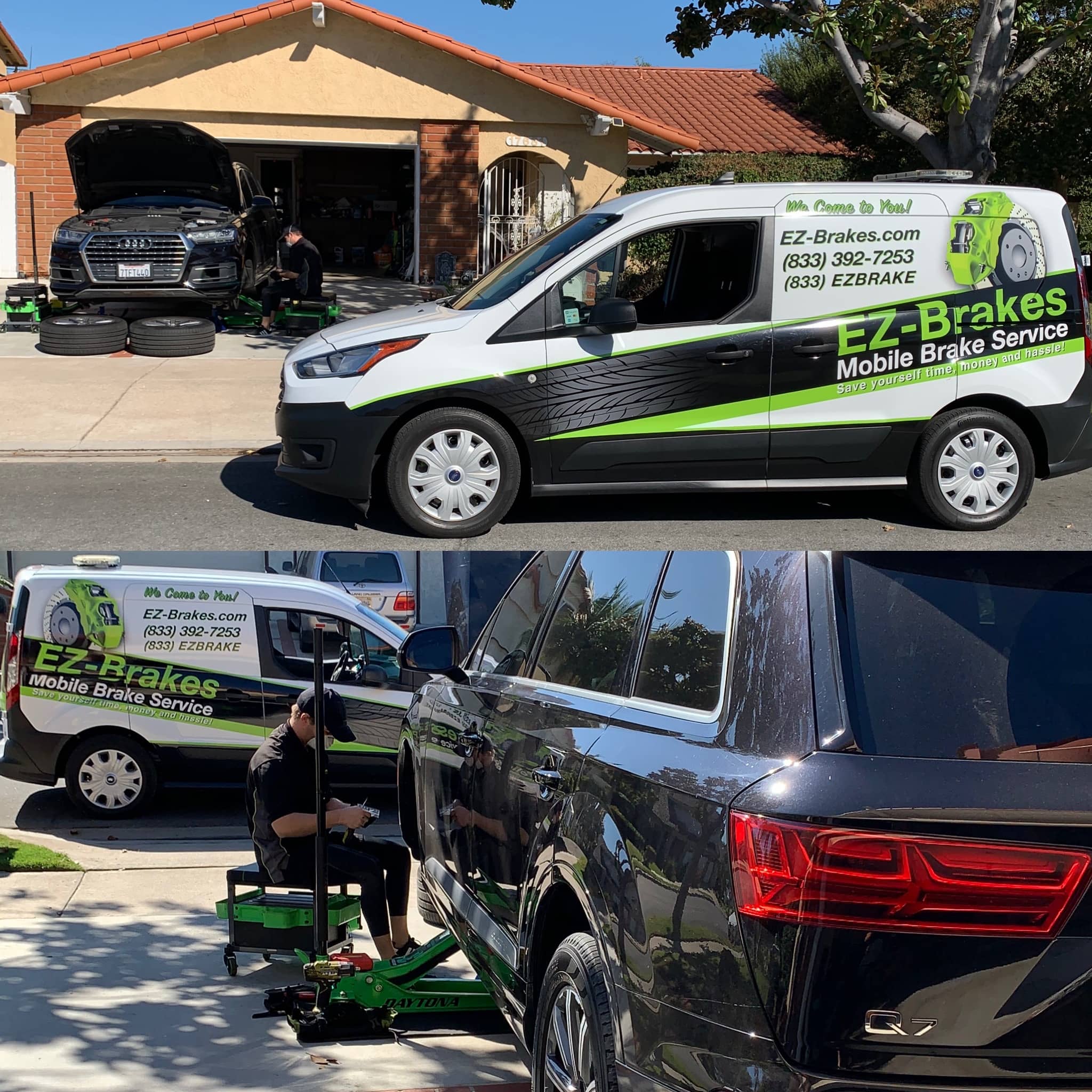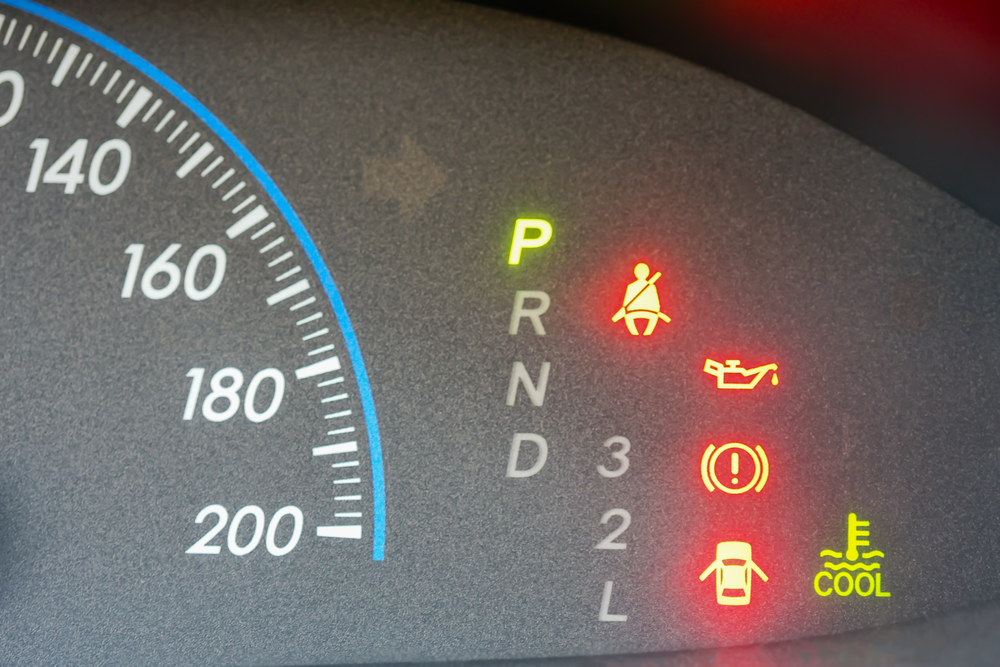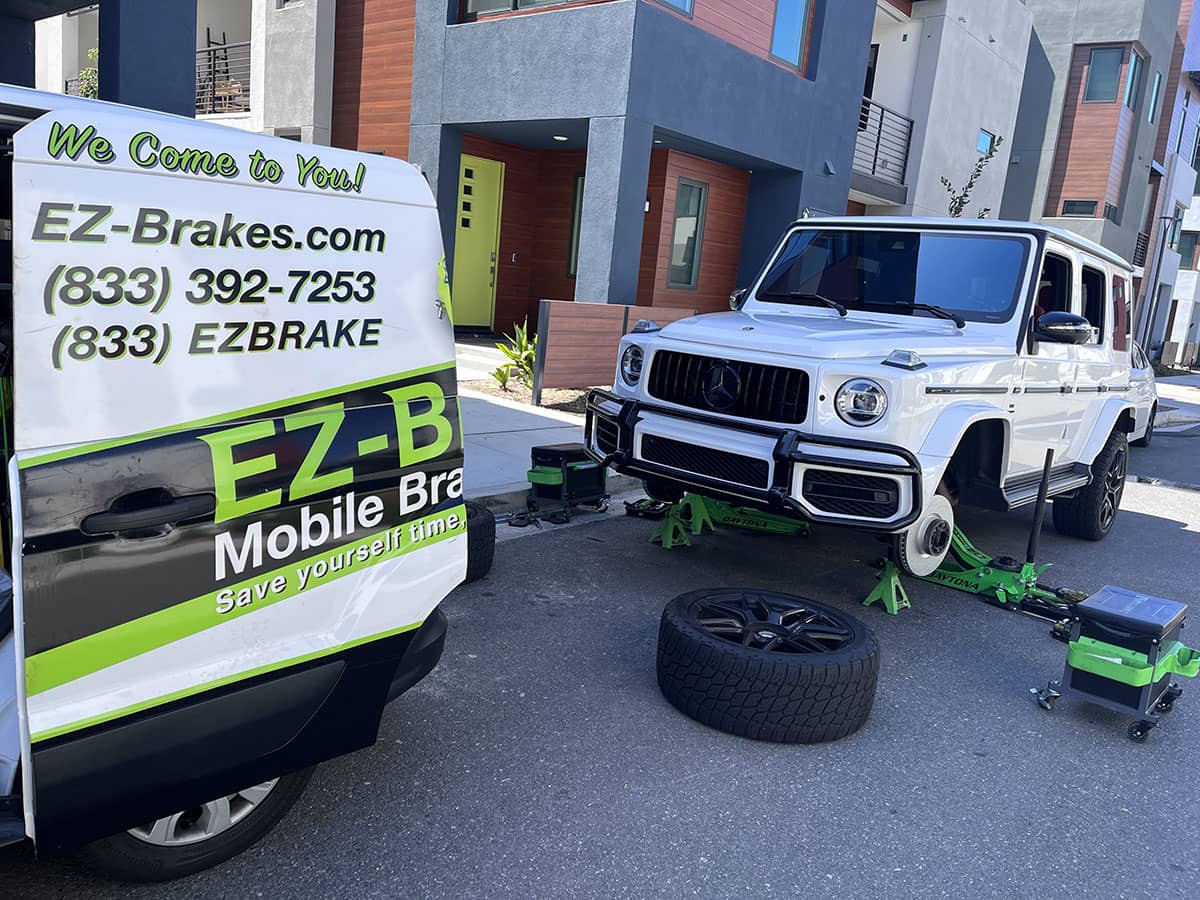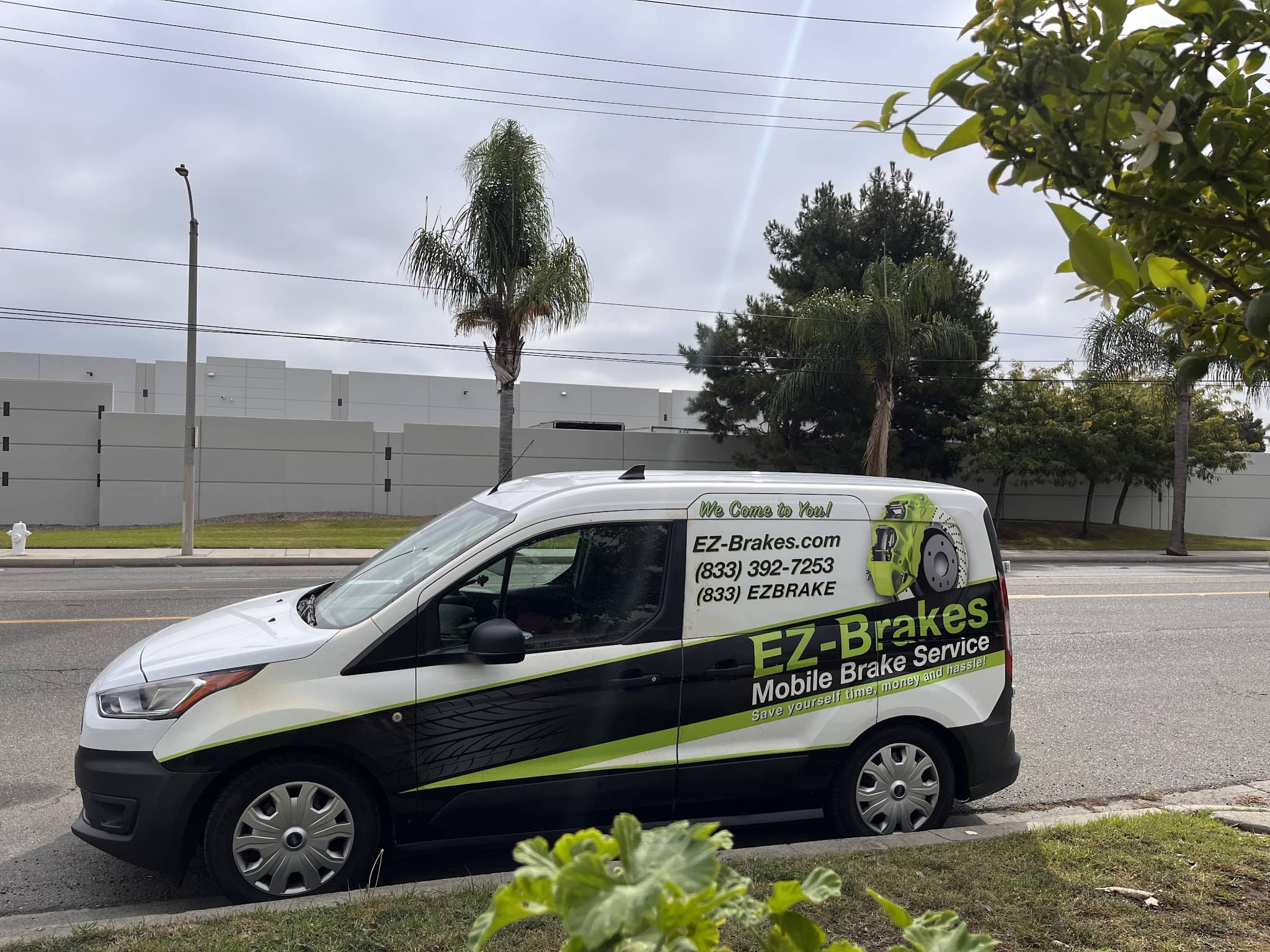Electric Parking Brakes Are Convenient—Until They Malfunction
Modern vehicles increasingly rely on electronic systems to enhance safety and convenience, and the electric parking brake is a standout example. While it eliminates the traditional handbrake lever and streamlines the interior, it can also present unique challenges when it fails.
Drivers of vehicles like the Honda Civic and Acura MDX often encounter issues with their electric parking brakes. Whether it’s a sudden dashboard warning or a complete failure to engage, understanding the problem is the first step toward a solution. EZ-Brakes mobile brake service is here to explain these issues and show you how to fix electric parking brake problems effectively.
What Is an Electric Parking Brake?
A High-Tech Take on a Traditional Safety Feature
An electric parking brake (EPB) replaces the manual handbrake with a button or switch. When pressed, it sends a command to an electric motor or actuator that applies the rear brakes. Some advanced systems automatically engage the brake when the vehicle is turned off or when it’s parked on an incline.
Common functions include:
• Push-button engagement
• Automatic brake hold
• Integration with hill-start assist systems
While these features enhance convenience and safety, they also introduce electrical and software components that can go awry.
Common Electric Parking Brake Problems
What Can Go Wrong—and Why
Electric Parking Brake (EPB) systems, while convenient, are not immune to operational hiccups. These systems integrate electronic components, mechanical actuators, and sensor-driven logic—making them susceptible to failures across multiple areas. Electrical faults, software bugs, and physical wear all play a role in system breakdowns. Two of the most commonly affected vehicles are the Honda Civic and the Acura MDX, each with unique EPB characteristics that contribute to recurring issues.
Electric Parking Brake Problem Honda Civic
Frequent Complaints from Civic Owners
The electric parking brake problem Honda Civic owners often report revolves around unexpected or premature engagement of the brake, even when the vehicle is in motion. One of the most common triggers is the sudden illumination of the EPB warning light on the dashboard, particularly in colder climates or during wet weather.
Root causes include:
• Moisture infiltration: Water or condensation in the actuator module or electrical connectors can short-circuit the system.
• Weak battery voltage: The Civic’s EPB is sensitive to voltage fluctuations, which can result in unpredictable behavior.
• Actuator motor strain: If the motor inside the EPB mechanism becomes overworked or jammed due to wear or debris, the brake may fail to engage or release.
• Corroded terminals: Especially in humid regions, connectors may corrode and interrupt the electric signal necessary for EPB function.
Owners often find themselves unable to disengage the parking brake, requiring either a diagnostic reset via a scan tool or a manual release mechanism—both of which may necessitate professional assistance.
Read more: How Long Does Brake Service Take?
Electric Parking Brake Problem Acura MDX
Complexity Meets Reliability—Sometimes
The electric parking brake problem Acura MDX drivers frequently encounter involves sophisticated software integrations that can sometimes backfire. The MDX’s EPB is tied into the vehicle’s overall stability and safety systems, which means any fault in one system can cascade into the EPB.
Common symptoms include:
• Persistent EPB alert messages on the dash, despite no visible malfunction.
• Brake failing to release, especially after a battery replacement or when the car is restarted in extremely cold conditions.
• Sensor mismatches: The MDX’s EPB relies on data from multiple sensors—wheel speed, tilt, and brake pad pressure. If any of these are misaligned or faulty, the system may prevent the EPB from disengaging as a precautionary measure.
Underlying causes often relate to:
• Software glitches in the vehicle’s main ECU or Body Control Module.
• Outdated firmware, particularly in 2017–2020 models, which often require reprogramming.
• Actuator calibration errors, especially after servicing or rear brake pad replacement, where the EPB must be recalibrated using a diagnostic tool.
In some cases, owners have reported being stranded or having to tow their vehicles due to an EPB that won’t release—a serious issue that highlights the importance of professional diagnostics.
Root Causes of Electric Parking Brake Malfunctions
What Triggers These Issues in Your Vehicle’s Brake System
Understanding why your electric parking brake (EPB) fails is the first step in solving the problem—and preventing future breakdowns. At EZ-Brakes, we’ve diagnosed hundreds of EPB-related issues across various makes and models, including popular vehicles like the Honda Civic and Acura MDX. These malfunctions generally fall into three categories: electrical failures, sensor/software bugs, and mechanical damage.
1- Electrical Failures
When the System Can’t Communicate, It Can’t Brake
Electrical issues are the number one cause of EPB malfunctions. Your EPB relies on a stable and responsive network of wiring, fuses, and connectors. If any part of this circuit is compromised, the parking brake may fail to engage, get stuck, or throw false warnings.
Common electrical failures include:
• Corroded Connectors
Over time, exposure to moisture and road salt can corrode electrical terminals and plugs. Corroded connectors prevent the EPB control unit from receiving signals properly, leading to intermittent function or complete failure.
• Faulty Wiring Harnesses
The wiring harness acts like the nervous system of your EPB. Damage from rodents, friction, or old age can cause short circuits or signal dropouts. This is particularly common in older vehicles or those frequently parked outdoors.
• Blown Fuses or Relays
Fuses and relays protect the EPB circuit from surges. If these components blow, the parking brake system will shut down as a safety measure. At EZ-Brakes, we check all fuses related to the brake and ABS system during our inspections.
2- Sensor and Software Bugs
The Hidden Digital Problems Behind EPB Failures
Your electric parking brake doesn’t operate in isolation—it’s part of a larger digital ecosystem that includes the ABS, traction control, and onboard diagnostic systems. When the software controlling these systems malfunctions or when sensors send inaccurate data, your EPB may misbehave.
Typical issues include:
• Malfunctioning Position Sensors
These sensors track the movement of the brake calipers and actuators. If they report the wrong position, the system may falsely believe the brake is applied—or fail to engage it when needed.
• Software Glitches
Sometimes, the electronic control unit (ECU) that governs the EPB system can crash or become unresponsive. This often results in random warning lights, delayed engagement, or refusal to disengage. Updating or reprogramming the ECU is a common fix offered by EZ-Brakes.
• Outdated Firmware
Just like your smartphone, your vehicle’s EPB system needs software updates. Old firmware may lack compatibility with newer diagnostic protocols or misread sensor data, leading to frequent faults. EZ-Brakes technicians always check for manufacturer updates during service.
3- Mechanical Damage
Sometimes, the Old-Fashioned Problems Still Apply
Even though EPBs are largely electronic, they still rely on physical components to do the actual braking. Mechanical failures are often mistaken for electronic issues, which is why thorough diagnostics are crucial.
Mechanical causes include:
• Actuator Motor Failure
The actuator is a small electric motor that physically engages and releases the parking brake. When it fails—due to wear, contamination, or manufacturing defects—the system cannot operate as intended. Replacing actuators is a specialty service at EZ-Brakes.
• Seized Brake Calipers
Rust, lack of lubrication, or worn-out seals can cause calipers to seize, preventing the brake from releasing. This can also damage pads and rotors if the brake remains engaged while driving.
• Worn or Contaminated Brake Pads
EPBs apply pressure to the rear brake pads. If these pads are worn thin or contaminated with oil or rust, they may not engage or disengage properly, leading to erratic braking behavior.
Read more: 4 Things That Can Happen When Driving With Worn Brake Pads
Diagnosing the Problem
How to Identify What’s Wrong Before It Gets Worse
Electric parking brake issues can manifest subtly or dramatically, but regardless of severity, timely diagnosis is essential. While professional services like those from EZ-Brakes offer precision and thoroughness, there are several steps you can take as a vehicle owner to get a preliminary understanding of the issue.
Understanding how to fix electric parking brake problems starts with a clear diagnosis. Here’s how you can approach it step-by-step:
Visual Check
A Simple Yet Effective First Step
Before jumping into electronic diagnostics, start with a straightforward visual inspection. Many electric parking brake problems, whether in a Honda Civic or an Acura MDX, are caused by easily visible mechanical or environmental issues. Look for:
• Loose or Disconnected Wires
Electrical signals are critical for EPB operation. Any disconnected or frayed wires near the brake assembly can disrupt signal transmission, preventing the brake from engaging or releasing.
• Physical Damage to the Actuator or Brake Components
Check the rear brakes for signs of impact damage or cracked components. Road debris can strike the undercarriage, damaging the actuator motor or linkages involved in brake application.
• Debris, Rust, or Corrosion
Moisture, salt, and road grime can accumulate in brake assemblies over time. This buildup can obstruct moving parts or interfere with electrical contacts, leading to intermittent or complete failure of the EPB system.
If any of these issues are visible, a thorough cleaning or part replacement might resolve the problem before it escalates.
Read more: 5 Signs Your Service Brake Needs Immediate Attention
Dashboard Alerts
Warning Lights Speak Volumes
Your dashboard is the vehicle’s way of communicating trouble. In the case of electric parking brakes, there are specific indicators to watch for:
• The Parking Brake Icon (usually a “P” in a circle)
If this light stays on after disengaging the brake or blinks when trying to activate it, there could be a fault in the EPB system. This is common in Honda Civic electric parking brake problem scenarios.
• ABS and Brake System Warnings
The EPB often shares sensors and communication pathways with the Anti-lock Braking System (ABS). If these lights come on together, the issue might involve a sensor used by both systems or an issue with brake fluid pressure.
Ignoring these lights or clearing them without addressing the root cause can lead to worsening performance—or even a complete system lock-up.
Diagnostic Scanners
High-Tech Tools for Modern Problems
When visual inspections and dashboard clues aren’t enough, a diagnostic scan offers a deeper look. Using an OBD-II scanner (On-Board Diagnostics tool), you can retrieve error codes stored in your vehicle’s control modules.
• Locate the OBD-II Port
Usually found under the driver’s side dashboard, this port connects to handheld scanners or smartphone-based apps.
• Interpret the Codes
Common codes related to electric parking brakes include:
• C1110 – Brake actuator malfunction
• U0416 – Invalid data received from the vehicle dynamics control module
• C13B2 – Electric parking brake motor or sensor fault
Each code points to a specific malfunction, whether it’s a wiring issue, motor failure, or communication problem between modules.
• Act Based on the Data
After identifying the codes, refer to your service manual or contact EZ-Brakes for a comprehensive evaluation and targeted repair.
Why Diagnosis Matters
A vague warning light or a “click but no brake” sound may not tell the full story. But with a layered approach—beginning with a visual check, noting dashboard warnings, and ending with diagnostic scanning—you can isolate the issue quickly and accurately.
This method is especially valuable for pinpointing persistent problems in vehicles like the Honda Civic and Acura MDX, where electric parking brake systems are tightly integrated with the car’s electronic architecture.
EZ-Brakes uses this same structured diagnostic approach, enhanced by professional-grade tools and years of hands-on experience, to identify and fix problems before they become costly or dangerous.
How to Fix Electric Parking Brake Problems
Step-by-Step Solutions to Restore Functionality
Resolving electric parking brake issues requires a mix of diagnostic tools, technical knowledge, and sometimes, professional help. Below is a breakdown of how to fix common EPB issues—specifically for Honda Civic, Acura MDX, and other vehicles.
Fixing a Honda Civic Electric Parking Brake Problem
Targeted Fixes for a Common Honda Issue
The Honda Civic electric parking brake problem typically presents as a dashboard warning light, or a brake that fails to engage or release properly. Here’s how to address it:
• Reset the EPB via the Onboard Computer:
Many EPB faults are triggered by momentary glitches. A reset can clear these. To perform this:
• Turn the ignition to “On” without starting the engine.
• Press and hold the EPB switch.
• Watch for a confirmation light or message on the dashboard.
• If needed, disconnect the battery for 15 minutes to force a system reboot.
• Check Battery Voltage:
A weak or dying battery is one of the most overlooked causes of EPB failure. The system requires a stable 12+ volts to function reliably. Use a multimeter:
• If voltage drops below 11.5V, charge or replace the battery.
• Low voltage can trigger false error codes and disable EPB actuation.
• Replace or Clean the EPB Actuator:
The actuator physically engages the rear brake pads. If it’s contaminated with debris or corroded from moisture, it may jam.
• Unbolt the actuator from the brake caliper.
• Inspect for dirt or corrosion.
• Clean with electrical contact cleaner or replace entirely if faulty.
Fixing an Electric Parking Brake Problem Acura MDX
High-Tech Troubleshooting for a High-End SUV
The electric parking brake problem Acura MDX owners face is often tied to software or sensor inconsistencies.
• Update Vehicle Firmware:
Acura integrates software with the EPB system. Outdated firmware can misinterpret sensor data, causing false alerts or functional errors.
• Visit a certified Acura dealership.
• Request an ECU and EPB module firmware update.
• In some cases, this alone resolves persistent brake warnings.
• Test Related Sensors (Especially Wheel Speed Sensor):
EPB systems rely on accurate wheel speed data to apply brakes safely. A failing sensor can:
• Prevent the brake from engaging.
• Trigger ABS or EPB warnings.
• Use an OBD-II scanner to identify sensor issues.
• Replace any non-responding or damaged sensors.
• Inspect for Moisture or Corrosion:
Moisture inside the EPB module (located near the rear axle) can short circuits or degrade performance.
• Check for water intrusion, especially after heavy rain or car washes.
• Apply dielectric grease to seals and connectors for moisture resistance.
General Repair Tips
Universal Fixes for Any EPB System
If you’re dealing with a different make or model, these steps apply broadly to most EPB-equipped vehicles:
• Battery Disconnect Reset:
Disconnect the negative terminal for 15 minutes. This resets all ECUs and may clear false EPB alerts caused by temporary glitches.
• Replace Damaged Fuses or Relays:
EPB systems are protected by fuses and controlled by relays. Locate your vehicle’s fuse box (check the owner’s manual) and:
• Inspect fuses related to the braking system.
• Replace any that are blown.
• Test relays for continuity and replace if needed.
• Emergency Release Procedures:
Most vehicles offer a manual override for the EPB in case of failure.
• Typically located in the trunk or under the center console.
• Involves pulling a release cord or using a special tool.
• Always follow your vehicle-specific instructions to avoid damage.
Read more: How Long Does Brake Service Take?
Preventative Measures
Keep the EPB Running Smoothly
Preventive maintenance is your best defense against electric parking brake problems. These systems are technologically advanced and interlinked with your vehicle’s electronic control modules, so even minor neglect can lead to significant malfunctions. By following the tips below, you can extend the life of your electric parking brake (EPB) and reduce the risk of costly repairs.
Regularly Check for Software Updates
Modern EPB systems depend heavily on software to function correctly. Manufacturers like Honda and Acura periodically release updates to address bugs, improve performance, and enhance compatibility with new vehicle systems.
• Why It Matters: Outdated software can cause false alerts or prevent the EPB from engaging/disengaging correctly.
• How to Do It: Visit your dealer or a qualified service provider like EZ-Brakes to check for and install any available firmware updates.
Don’t Engage the EPB While Moving
Engaging the electric parking brake while the vehicle is in motion can lead to serious mechanical damage. Although most EPBs are designed to override this action for safety, older or malfunctioning systems may still attempt to apply the brake.
• Why It Matters: This can strain or break the actuators, wear out the rear brake pads prematurely, or confuse the vehicle’s onboard systems.
• How to Avoid: Always ensure the vehicle is fully stopped before pressing the EPB button. Teach all drivers of your vehicle this critical rule.
Avoid Parking in Extreme Cold or Wet Conditions Without Clearing the Brakes
Moisture and debris can freeze or corrode components in the brake system, especially the caliper and actuator areas. This is a common cause of stuck brakes and actuator failure.
• Why It Matters: Ice can block actuator movement, and corrosion can ruin sensors or wiring, leading to dashboard warnings or a complete brake lockout.
• How to Avoid: After driving in snow, slush, or rain, allow the brakes to dry by lightly applying them during your last few minutes of driving. If possible, park in a garage during extreme conditions.
Schedule Routine Inspections with a Specialist Like EZ-Brakes
Regular professional maintenance helps catch small issues before they turn into major failures. A certified technician can inspect electrical connections, assess actuator performance, and test brake response accuracy.
• Why It Matters: Early detection of worn parts or minor sensor glitches can prevent emergency repairs and extend the system’s lifespan.
• What to Expect: At EZ-Brakes, we perform comprehensive diagnostics using manufacturer-grade tools, ensuring your EPB system operates safely and efficiently.
Why Choose EZ-Brakes?
Mobile Experts in Electric and Traditional Brake Repairs
EZ-Brakes brings expert brake service directly to your driveway. Whether you’re dealing with a Honda Civic electric parking brake problem or a more advanced Acura MDX EPB issue, our skilled technicians come to you equipped with everything needed to diagnose and fix the problem on-site.
We provide:
• Mobile service for your convenience
• Advanced diagnostic tools and equipment
• OEM-grade parts for lasting repairs
• Fast, professional, and affordable solutions
With EZ-Brakes, you don’t have to visit a shop—we bring quality brake care wherever you are.
FAQs About Electric Parking Brake Problem
What Triggers the Electric Parking Brake Warning in a Honda Civic?
This is usually caused by a software fault, weak battery, or bad actuator. Dirt and corrosion are also contributing factors.
Can You Manually Override the Electric Parking Brake?
Yes, most vehicles include an emergency manual release. Check your owner’s manual for the exact procedure.
How Expensive Is It to Repair an Electric Parking Brake?
Costs vary, but typically range from $200 to $700. Diagnosis is key—EZ-Brakes offers free consultations.
Is It Safe to Drive with an EPB Fault?
It’s risky. If the system doesn’t release, it could damage the rear brakes or limit movement.
How Often Should I Service My Electric Parking Brake?
Every 12 months or with routine brake inspections. More often in harsh weather areas.
Conclusion on Electric Parking Brake Problem
The electric parking brake is a marvel of modern automotive engineering—but it’s not immune to failure. Whether you’re grappling with an electric parking brake problem Honda Civic owners frequently encounter, or a rare electric parking brake problem Acura MDX issue, the key is early detection and expert care.
EZ-Brakes offers professional support for diagnosing and repairing these issues, keeping your vehicle road-safe and problem-free. Don’t wait until a small issue becomes a big one—schedule a checkup today.
